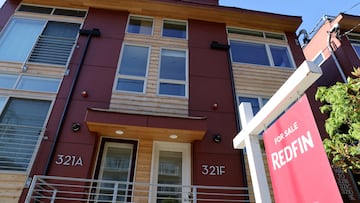How much have rental prices increased this year?
One of the biggest drivers of inflation for April 2024 was the price of housing, a growing problem in cities all across the United States.

Rents are on the rise. According to the latest Consumer Price Index for Urban Wage Earners and Clerical Workers (CPI-W), rents climbed 0.4% in April 2024 compared to March.
This continues the sky-high rents that were created during the covid-19 pandemic. Though rents fell by 1% on average over 2023, that was on the back of 12% and 15% increases in 2021 and 2022 respectively. Certainly not a pretty sight for renters.
A closer look at the US rental market
According to Zillow’s rental report for March 2024, asking rents increased 3.6% compared to the same time last year. This growth, while still present, marks a slowdown from the rapid increases seen in previous years.
The Bureau of Labor Statistics’ Consumer Price Index also reflects this trend, with shelter, which includes rent, continuing a more than 40-month increase in March. Rent alone was up 5.7% over the 12-month period ending in March, roughly the same as the overall 12-month increase for shelter. However, the Apartment List National Rent Report notes that rent growth is stalling out, with March’s 0.5% increase signaling ongoing sluggishness in the market.
Despite this slowdown, the national median rent has continued to rise, with Rent.com reporting a 0.77% increase in rent prices nationally between March 2023 and March 2024. This translates to a $15 increase in rent over the past year. Regionally, the Midwest and Northeast have seen the strongest rental gains, with asking rents in the Midwest rising by 5.3% and the Northeast experiencing a 3.8% rise in asking rents on a yearly basis.
The Zumper National Rent Report also highlights the stability of annual rent rates, with one-bedrooms down 0.6% to $1,486 and two-bedrooms increasing 0.1% to $1,843.
However, New York City continues to buck national trends, with one-bedroom rent up 19.9% annually and two-bedroom units up 26% annually.
What is affecting rent prices in the US?
The factors contributing to the current state of the rental market are multifaceted. Inflation, lack of inventory, expired rent freezes and discounts, a shifting workforce, and barriers to homeownership have all played a role in driving up rent costs.
Lack of inventory is particularly important. A major difference in the south compared to other places in the US is the available stock, which is keeping rents relatively low. Data from the Financial Times shows the affect of ample housing stock on house prices, in turn affecting renting prices. A factor in this is the time it takes to approve building permits: in San Francisco the average time for a permit to be granted is a whopping 627 days, compared to just 14 days in Dallas. Dallas has seen rents fall by 2.5% in the last year while San Francisco’s rent prices are down by just 1.5%.






